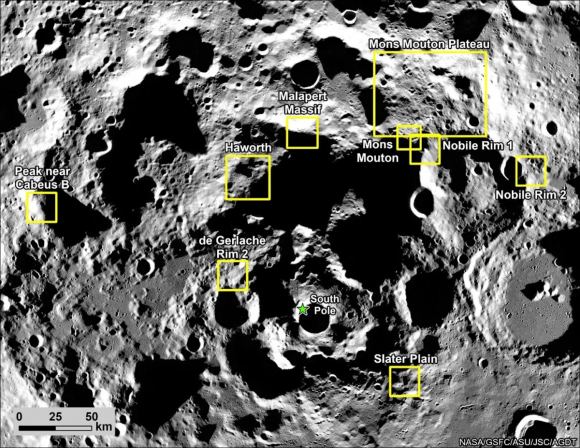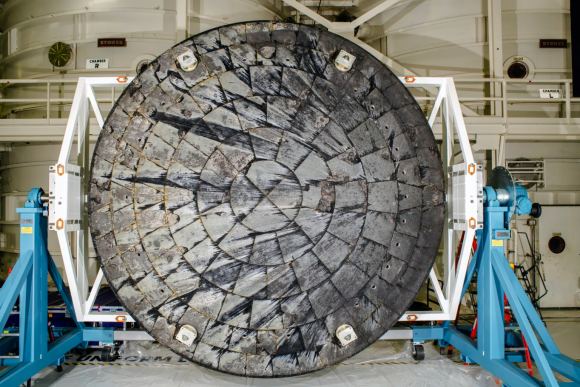The Artemis moon landings are delayed again due to technical difficulties. This time, the problem is with the Orion spacecraft heat shield. NASA administrator Bill Nelson announced that the new landing dates are in April of 2026 for Artemis II and sometime in 2027 for the first human landing during the Artemis III mission.
The difficulties the Artemis program faces stem from the complexity of the hardware and trajectories needed to take astronauts to the Moon according to Nelson. “The Artemis campaign is the most daring, technically challenging, collaborative, international endeavor humanity has ever set out to do,” said Nelson. He pointed out that the mission has made a lot of progress. However, there’s more work to be done, in particular on the Orion life support systems. Artemis II is next up in early 2026. It will be a test flight to demonstrate the viability of all the systems, said Nelson. “We need to get this next test flight right. That’s how the Artemis campaign succeeds.”
Making a safe return through Earth’s atmosphere is a vital part of the mission. After Orion came back from its Artemis 1 mission in November 2022, engineers noticed issues with the heat shield. They figured out that gases generated inside the heat shield didn’t vent properly. That caused cracks in the shield and triggered an investigation. The decision to delay the Artemis II test flight came after that investigation. This allows NASA engineers to work with the heat shield currently attached to the Orion capsule for the April 2026 flight. In addition, they’re studying the re-entry process to avoid future problems with the shield.
Artemis II to the Moon
As we all know, the Artemis program will allow long-term exploration of the Moon. The April 2026 mission is a test flight that will orbit, but not land, and then return to Earth. The idea is to test all the spacecraft’s systems with astronauts on board.
The Orion spacecraft is the crew’s living quarters and lab, all in one. It’s built to carry four astronauts from Earth to space and ultimately to the Moon. It makes sense that this “home away from home” has to be shielded from pretty much anything that space—and Earth’s atmosphere—can throw at the capsule. This includes the ultrahot trip through our atmosphere on the return trip. At times, Orion experiences temperatures up to 2700 C (5000 F), which could harm the capsule if not for the shielding. So, the shield is a life-saver.
When Orion first encountered the heat shield problem, engineers determined that heating rates increased during the spaceship’s planned “dips” into the atmosphere. It was performing a skip guidance entry technique. Heat built up inside the heat shield’s material and gases accumulated. Eventually, that cracked areas in the outer layer of the shield and blew some of it off to space. It turns out that if astronauts had been aboard, they would not have been affected. However, now that engineers understand what occurred, they can enhance the heat shield material to make sure it doesn’t happen again. In addition, the mission plan will be altered to change how far the capsule flies between atmospheric re-entry and eventual landing.
Upgrading Mission Plans
The extended time until the April 2026 and mid-2027 Artemis missions will allow improvements to the capsule and launch systems. For example, engineers can give more attention to environmental and life support systems. This is particularly important for the Artemis III mission. It will launch on top of a Space Launch System rocket into Earth orbit. Once there, the mission will perform a translunar injection to send it to lunar space.
Not only will it carry astronauts to the Moon, but they will land in the south polar region using a SpaceX landing system. That 30-day mission will require at least two crew members to spend a week at the pole collecting samples, doing site photography, and measuring conditions there.

Credit: NASA
Artemis III will be the first time anyone has set foot on the Moon since the last Apollo mission in December 1972. The entire Artemis program aims at providing long-term habitation and study of Earth’s nearest neighbor in space. To that end, NASA has been studying several interesting landing spots at the pole.
Eventually, there will be an orbiting lunar station, plus habitats on the surface and regular trips between. NASA and other agencies expect that lunar explorers will be spending their time studying the surface and geology of the Moon, plus determining what resources are available for long-term exploration and habitation. However, given the pace of the program, those next developments probably won’t take place until the 2030s.
For More Information
NASA Identifies Cause of Artemis I Orion Heat Shield Chart Loss
As Artemis Moves Forward, NASA Picks SpaceX to Land Next Americans on Moon
Artemis II
Artemis III: NASA’s First Human Mission to the Lunar South Pole
Read our previous article: Satellites find likely cause of mysterious African elephant deaths in 2020
